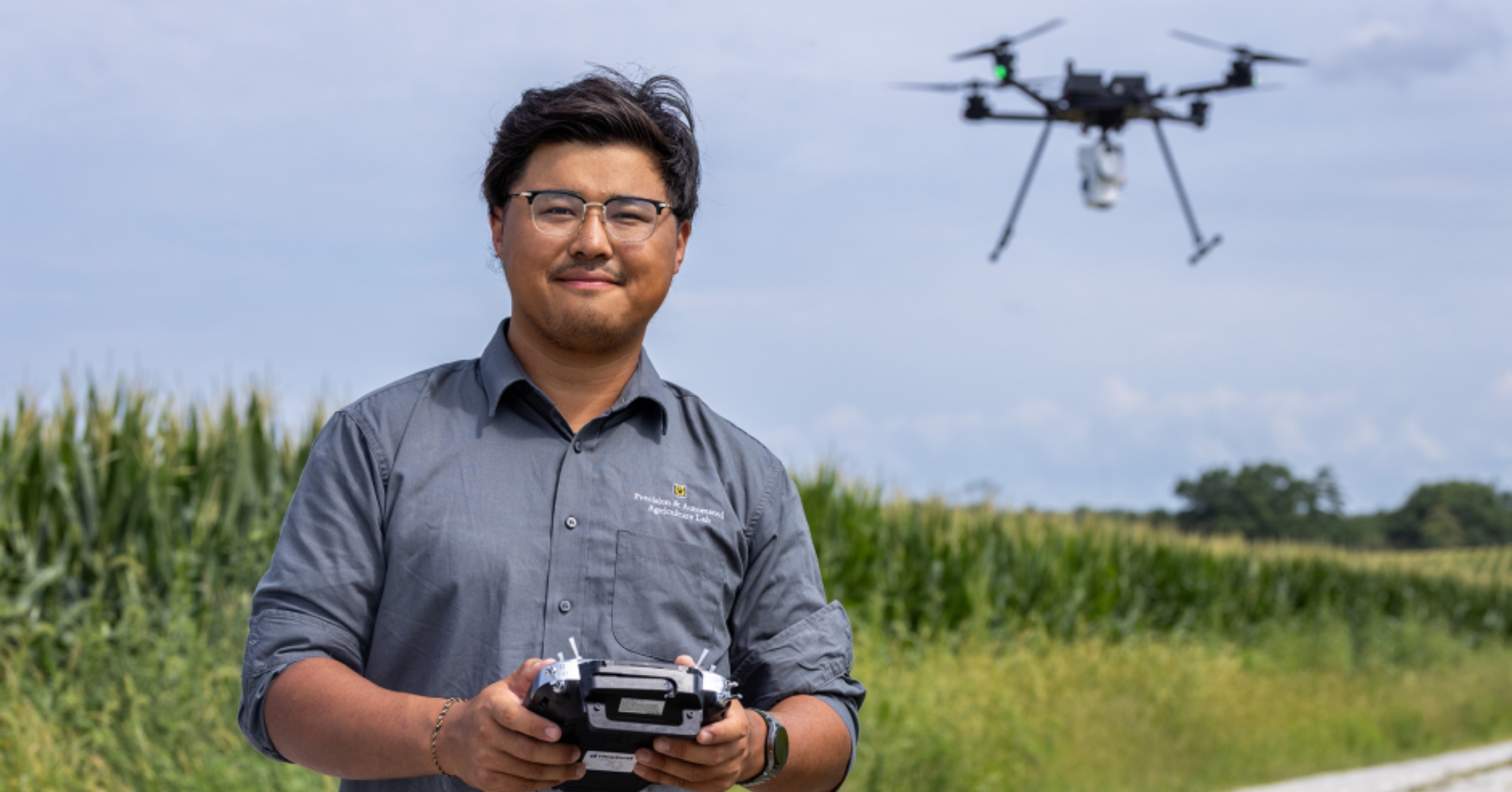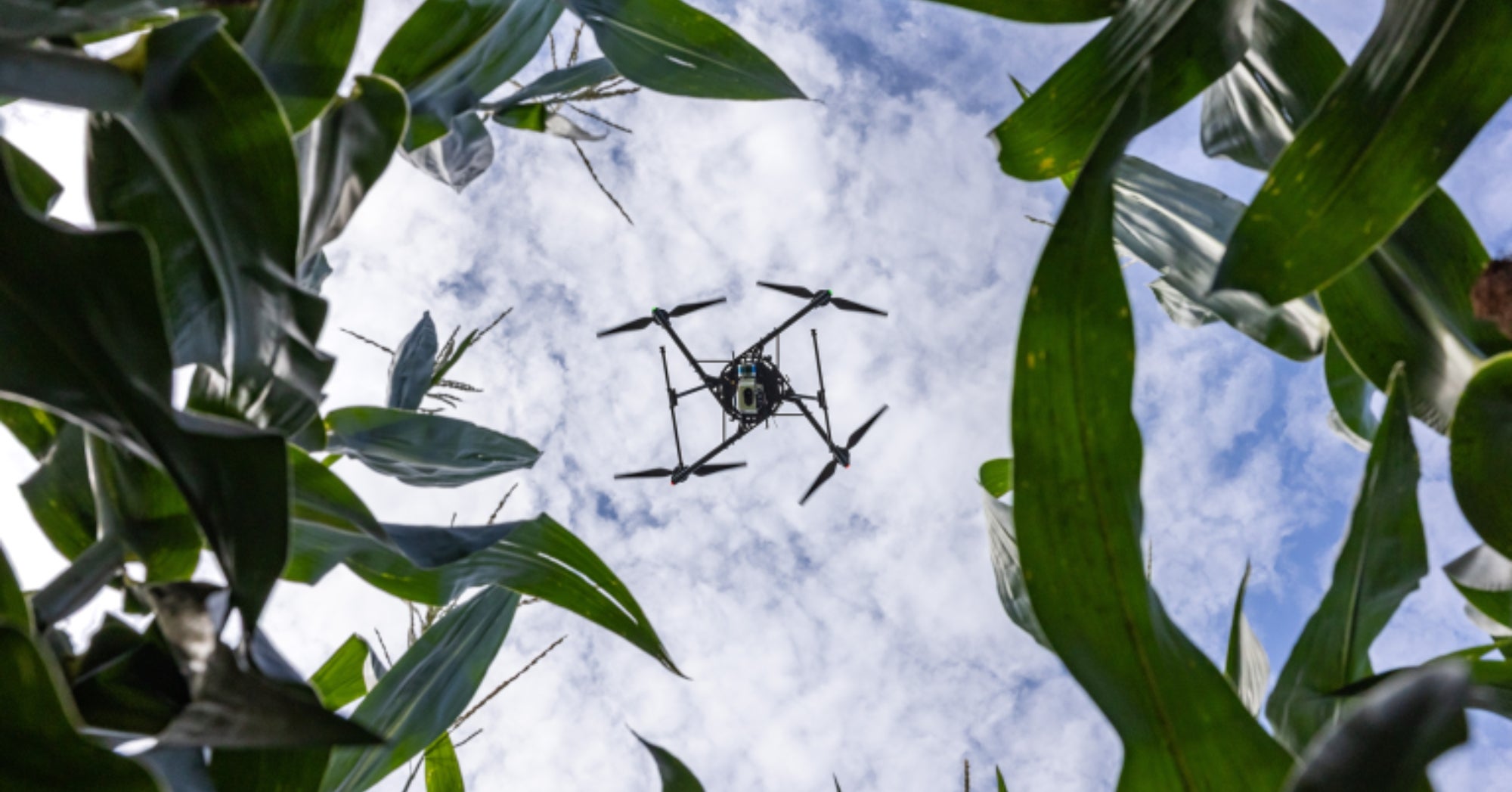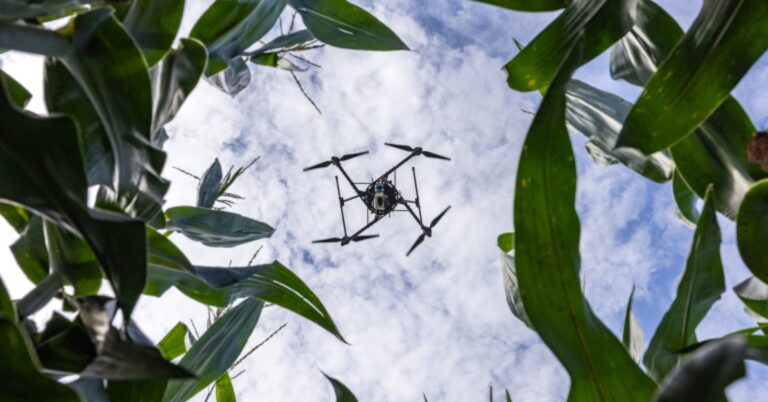Researchers at the University of Missouri have found a mix of drones and AI can help farmers measure the health of their corn more efficiently.
Instead of relying on handheld devices — which can be slow and impractical for larger fields — the researchers surveyed corn fields in mid-Missouri using drones equipped with special cameras to capture images and data. By analyzing the images and data using artificial intelligence, the team was able to accurately estimate chlorophyll levels — a key indicator of corn health.
The drone’s special cameras capture different wavelengths of light that plants reflect, such as near-infrared light and red-edge light, which are invisible to the human eye but closely linked to plant health.
After combining these drone images with soil data, the Mizzou researchers used a type of AI known as machine learning to quickly predict the chlorophyll content in the corn leaves of the entire field with great accuracy.
The study titled, Estimating corn leaf chlorophyll content using airborne multispectral imagery and machine learning, and published in Smart Agricultural Technology, was led by Fengkai Tian, a Mizzou doctoral student who works in the lab of Jianfeng Zhou, an associate professor in the College of Agriculture, Food and Natural Resources.

“The goal of our lab is to use innovative technologies to improve the efficiency of agricultural systems,” said Zhou. “Nitrogen application has been one of the biggest challenges facing corn farmers. We want to help farmers increase their yields while using fewer chemicals that can impact the environment. Precision agriculture can help farmers apply nitrogen at the right time to the right location in the right amount.”
Because corn demands a lot of nitrogen to grow, knowing the specific chlorophyll content of each plant helps farmers decide when and how much nitrogen-rich fertilizer to apply to each of their crops. Too much nitrogen is expensive and harmful to the environment, while too little can hinder crop growth.
Tian is hopeful that drones can give farmers a tool to make more informed decisions surrounding crop management — and ultimately maximize crop yield while saving time and money and protecting the environment.
“Going forward, farmers could potentially contract with agriculture technology companies who can fly the drones and process all the data so the farmers can benefit from the technology without having to be experts in it themselves,” Tian said.


Tian added that while this study focused on corn, which needs a lot of nitrogen to grow, the innovation of combining drone imagery with machine learning can eventually help inform farmers about the health of other crops that are less nitrogen-dependent, including soybean and wheat.
The study was a collaboration between Mizzou and the Agricultural Research Service, the chief scientific research agency for the U.S. Department of Agriculture.



:max_bytes(150000):strip_icc()/52513708671_2a6075fabe_o-dcd59efb1faf4c40afb3d8f39629aa7d.jpg)
:max_bytes(150000):strip_icc()/JaceYoung-ee4a04deb5fe4fbfa816744f027fcda5.jpg)




:max_bytes(150000):strip_icc()/pumpkins-_-cami-koons-2048x1545-b706ebeeace44615adaef29ad2c99f39.jpg)
:max_bytes(150000):strip_icc()/1-89ea904b07704f62a53279adb3db52b3.jpg)
